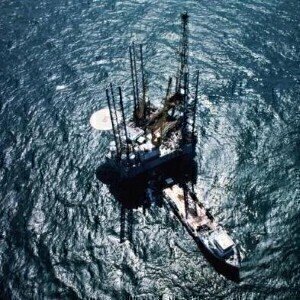Fuel for Thought
How Much Oil Is There in the Falklands?
Nov 24 2014
The Falklands are a small archipelago situated in the South Atlantic Ocean made up of some 780 islands. With a population of less than 3000 people spread over 4700 square miles — the islands are sparsely populated.
The major economic activities on the islands are fishing, tourism and sheep farming. The fishing industry makes the largest contribution to the islands Gross Domestic Product (GDP) — and the Falklands are 222nd in the world based on GDP. But all this could change in the next few years if the islands get the chance to exploit black gold — oil.
Forming the Falklands
The islands were created during the break-up of the supercontinent Gondwana during the Jurassic period between 160-125 million years ago — with the oil being deposited during the Early Cretaceous period around 130 million years ago. During Gondwana’s break-up, ocean basins formed that covered the oil deposits. The tectonic plates continue to move and change the layout — not something that we can notice due to the timescales involved.
Where is the Oil?
Several oil fields were formed around the Falklands during the break-up of Gondwana. For oil to form three elements had to be in place. There had to be a source rock to generate the oil, something that under intense heat and pressure changes into oil. Then there has to be a rock that can store the oil, a porous rock such as sandstone — the reservoir rock. And there has to be a rock that can trap the oil in one place.
Oil exploration is currently focused on two areas of interest around the Falklands. They are:
1) North Falklands Basin
200 kilometres to the north of the islands, it is estimated that there are 325 million barrels of recoverable oil. The oil is at a depth of between 2000-3500 m below the sea floor — which is 450 m below sea-level.
2) South and East Falklands Basins
This basin covers a larger area than the North Falklands Basin. 200 miles from the islands — stretching in an arc from east of the islands to directly south of the islands. The sea floor is between 1000 and 1500 m deep — with the oil 2000-3500 m below the sea floor. There could be up to 5 billion barrels of oil or gas in the fields. In comparison, the world’s largest oil field is thought to be the Safaniya oil field in the Persian Gulf — recoverable reserves of 36 billion barrels.
The first oil is expected in 2016 from the North Basin. The larger South and East Basin is still at the exploratory stage. Finding the oil is only the first step — and many hazardous operations will follow. Will the oil be economical to extract? The changing requirements of regulators in demanding cleaner petroleum products puts a premium on low sulphur oil for example. Regulatory change is discussed in Meeting Tier 3 Requirements with Ease and Precision. These far flung islands could soon be very rich — but at what cost?
Digital Edition
PIN 25.4 Aug/Sept
September 2024
Analytical Instrumentation - Novel and Rapid LSC method for the analysis of biogenic carbon in fuels Measurement and Testing - Matrix evaluation on the Xplorer-V with Vectra autosampler accordi...
View all digital editions
Events
Nov 04 2024 Abu Dhabi, UAE
Nov 04 2024 Kigali, Rwanda
Nov 05 2024 Toronto, Canada
Nov 05 2024 Paris, France
Nov 12 2024 Cologne, Germany



















